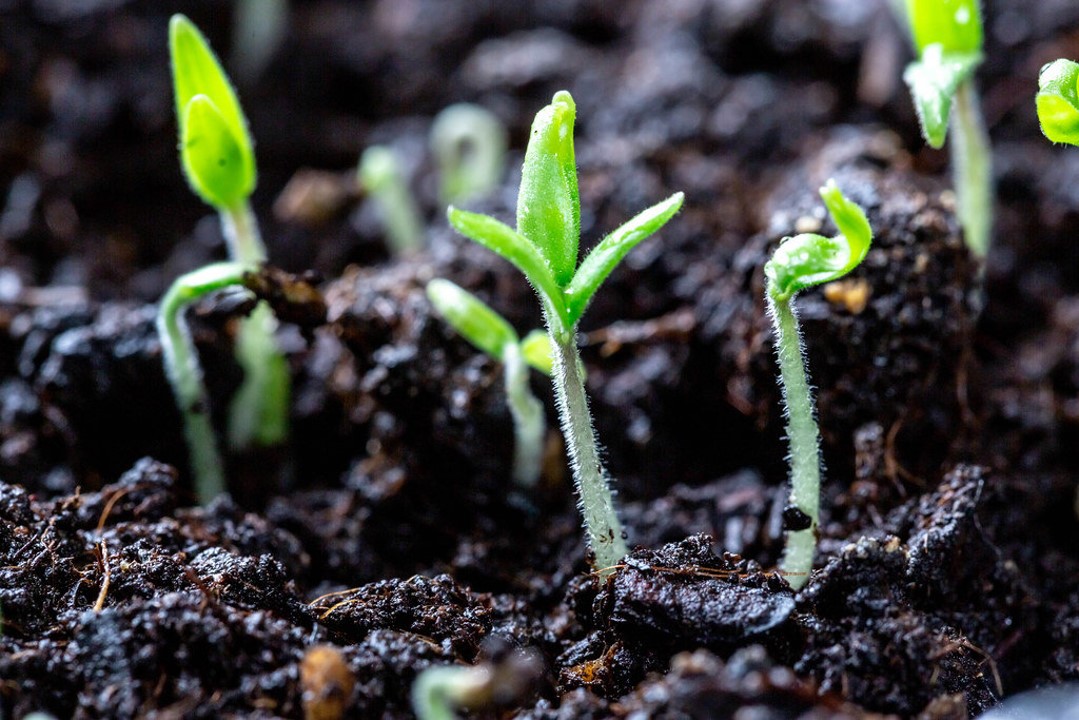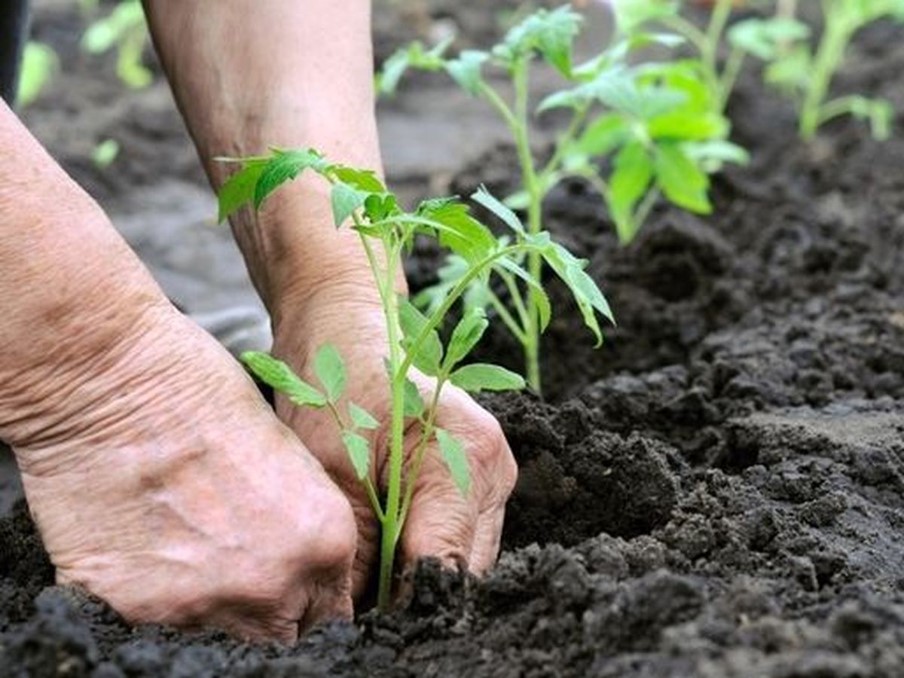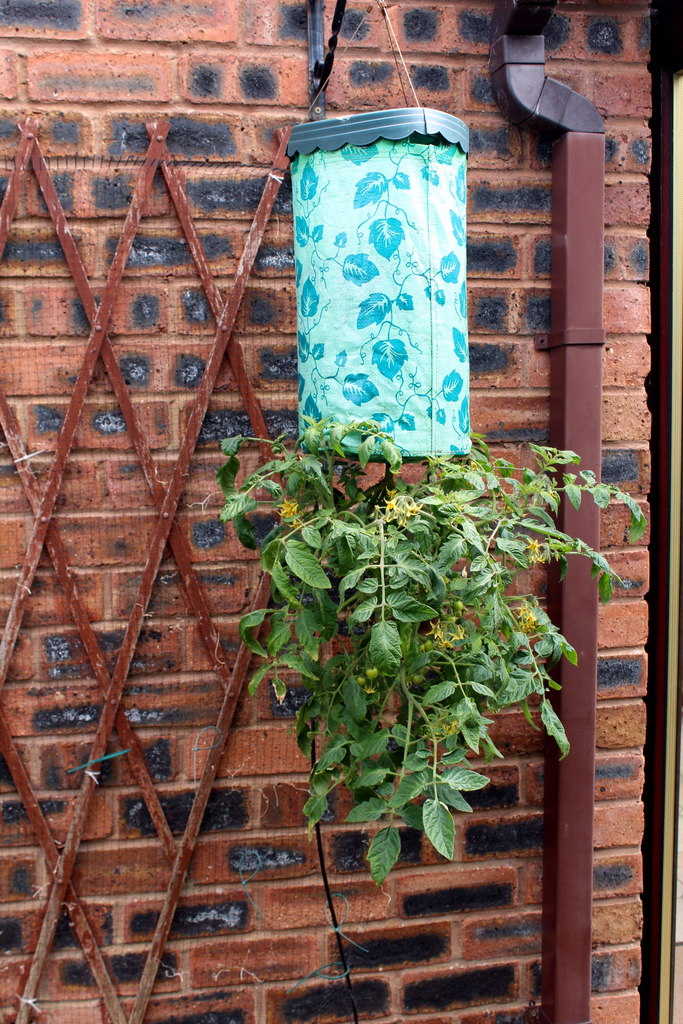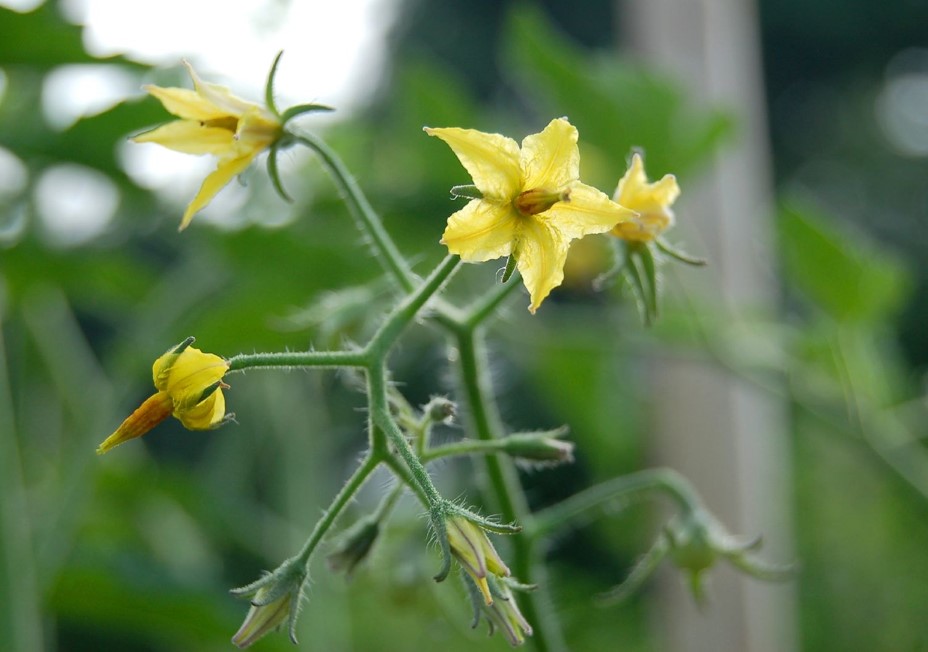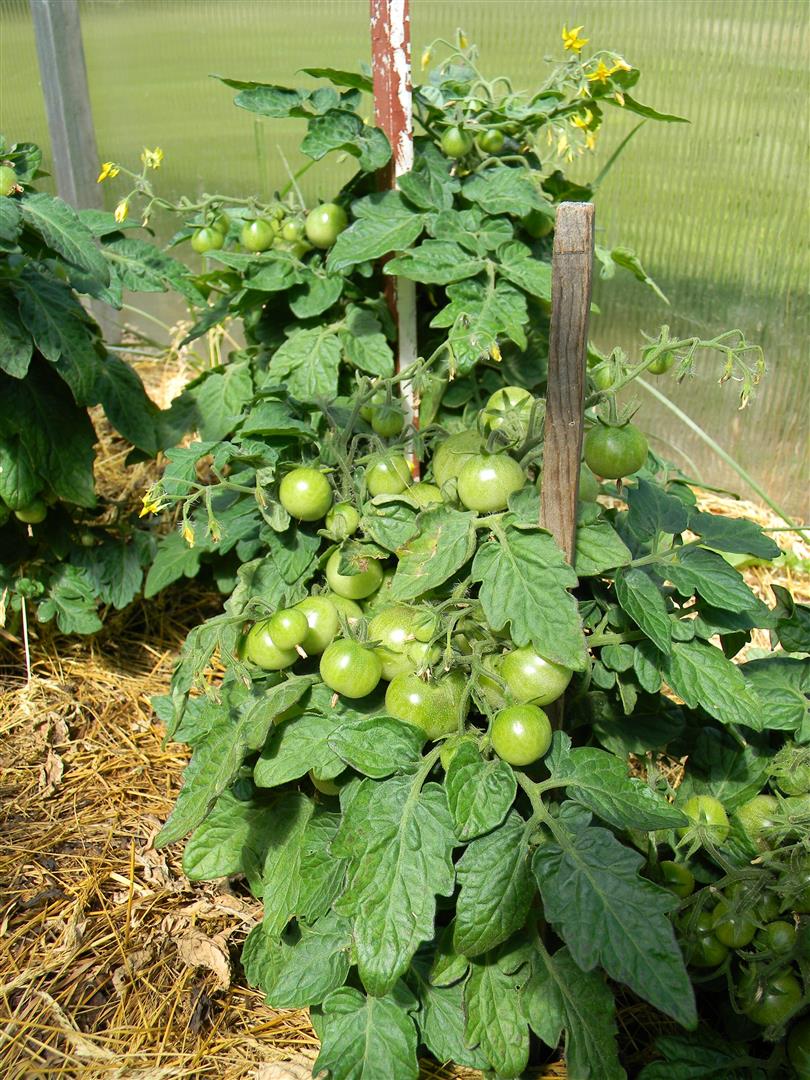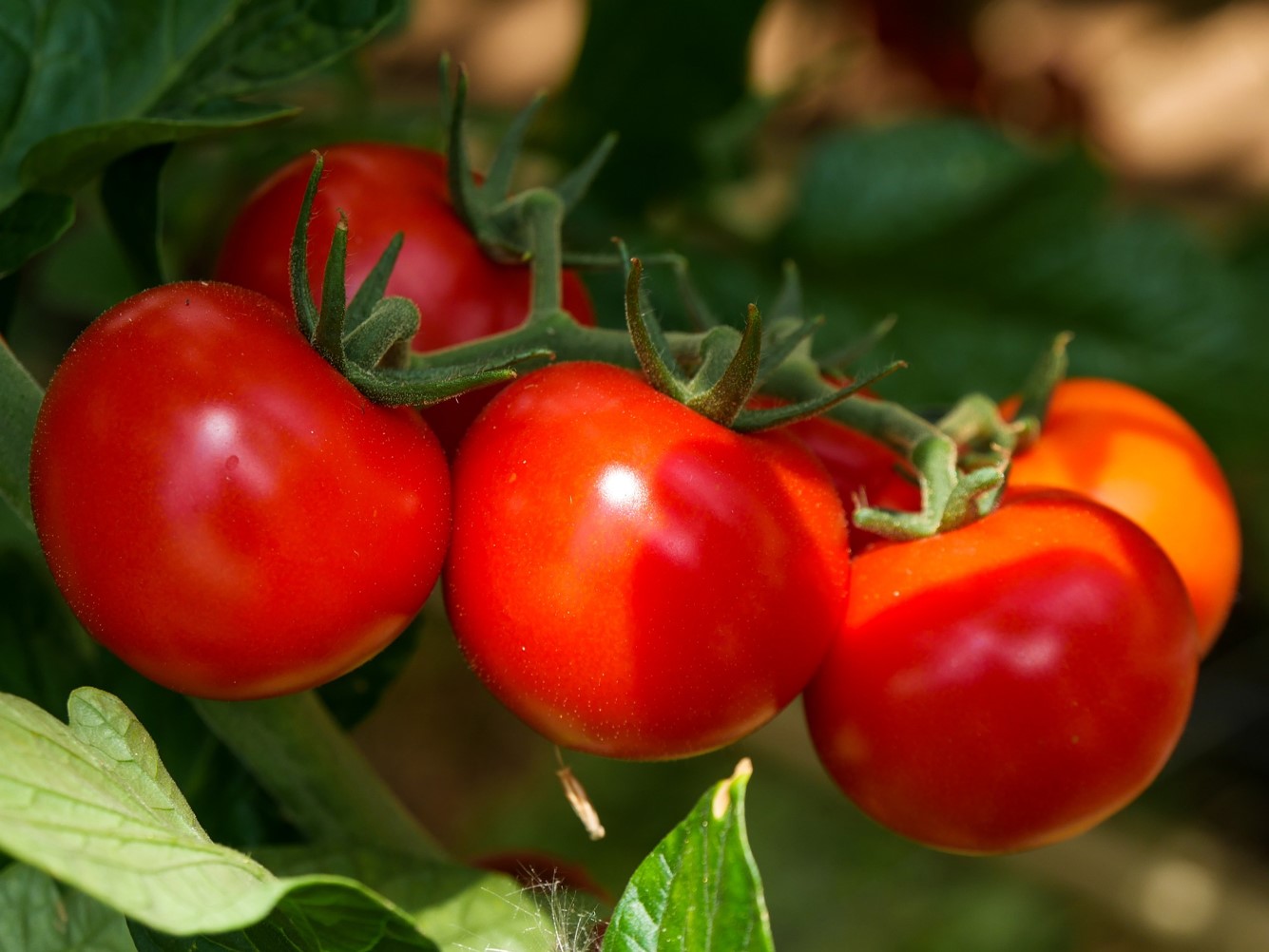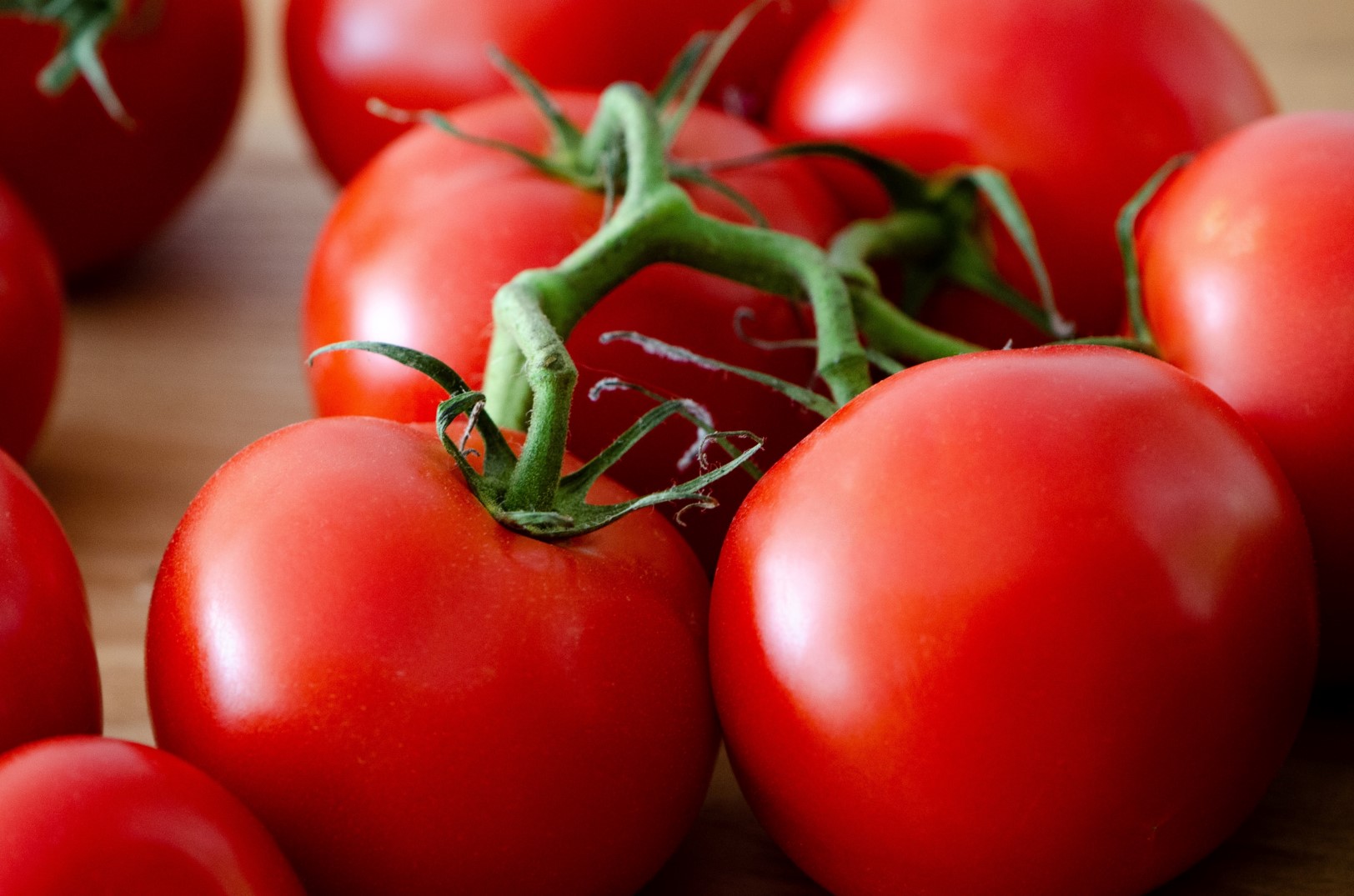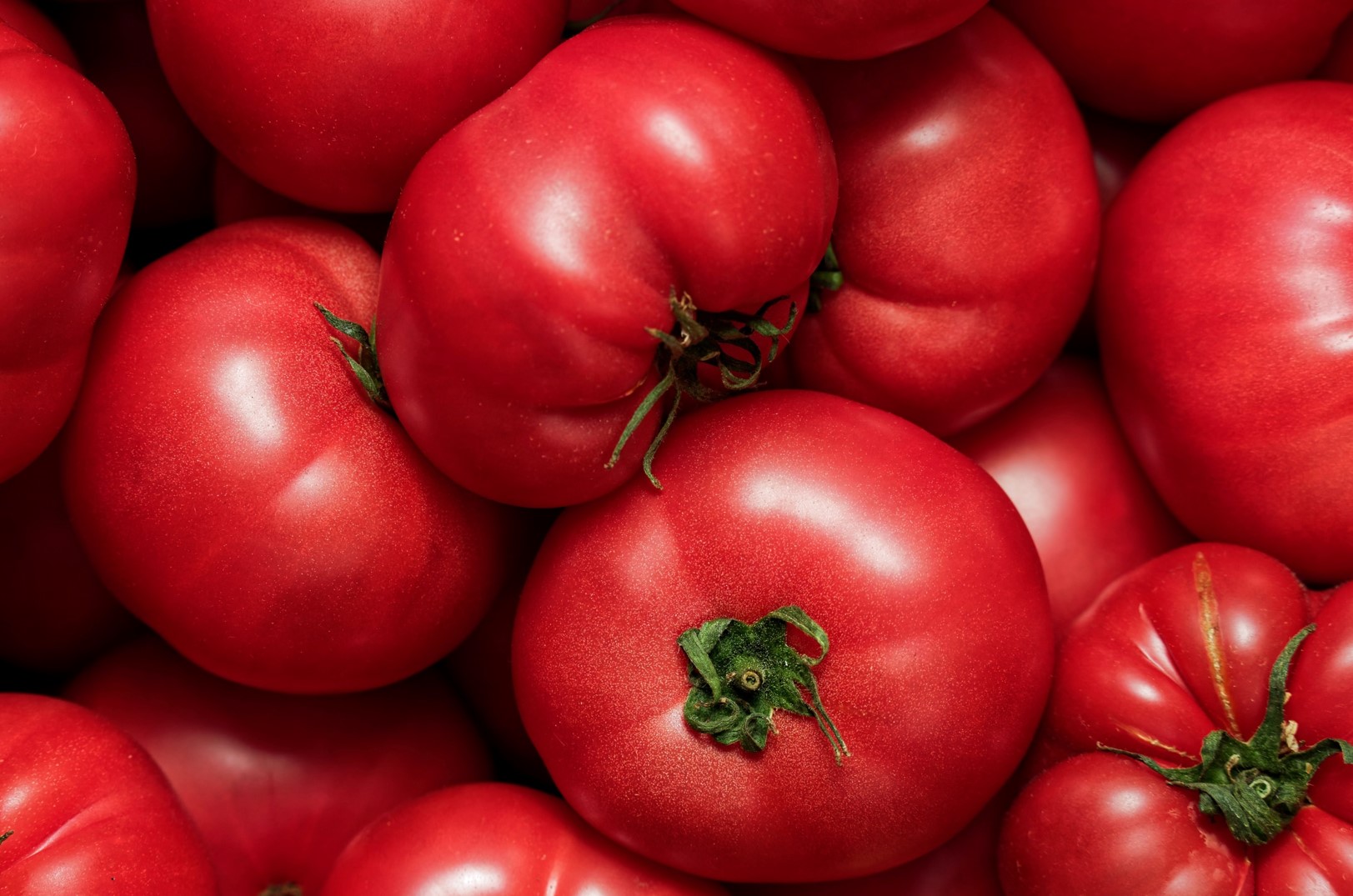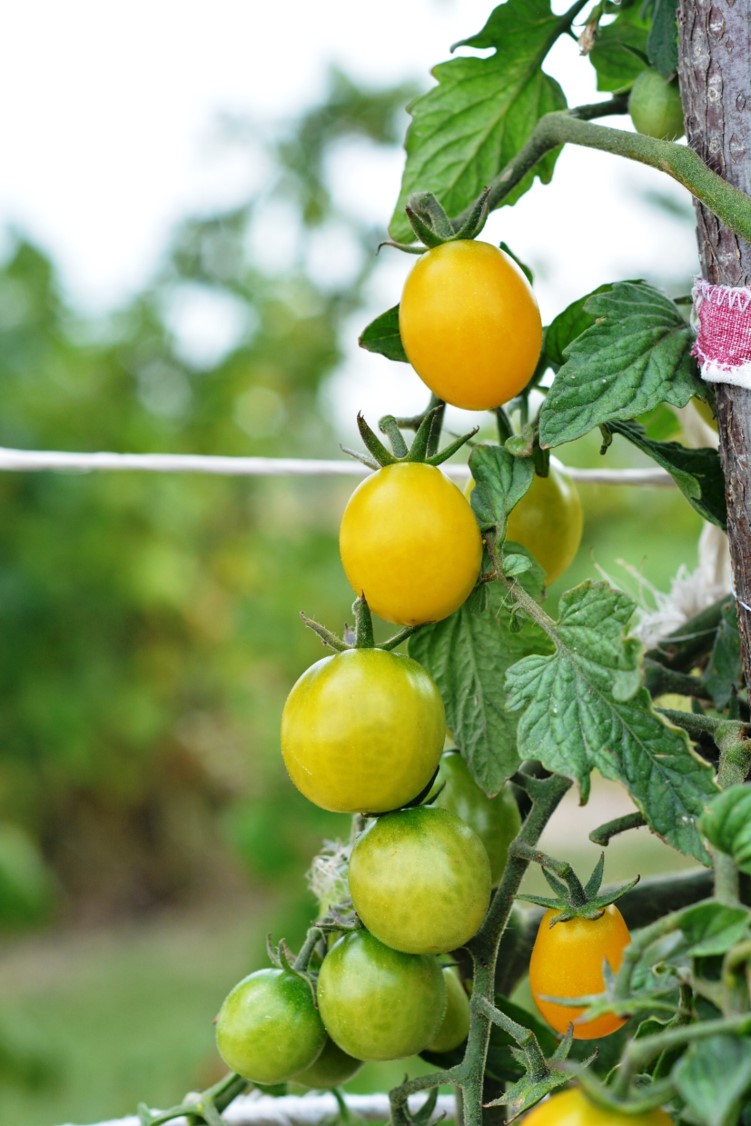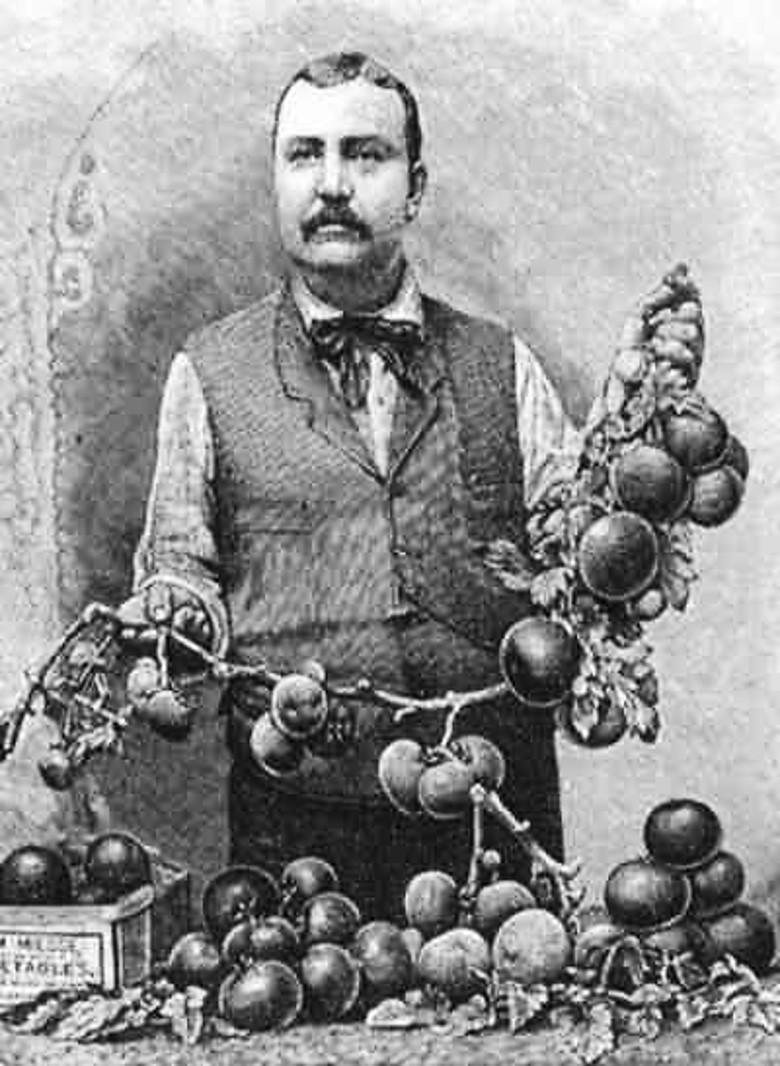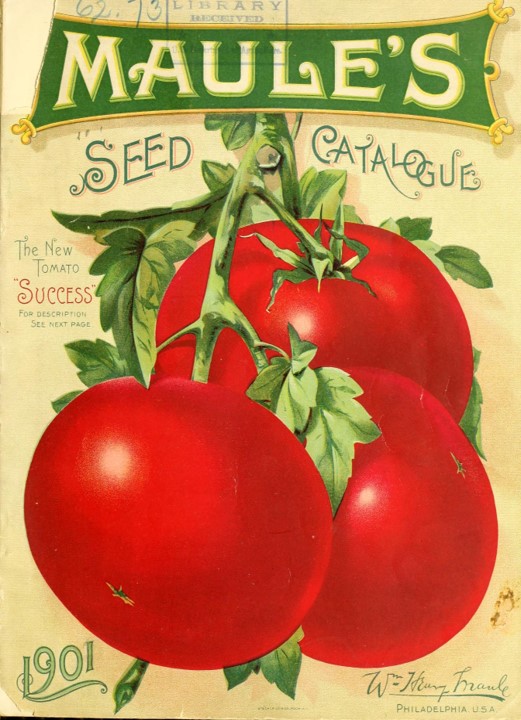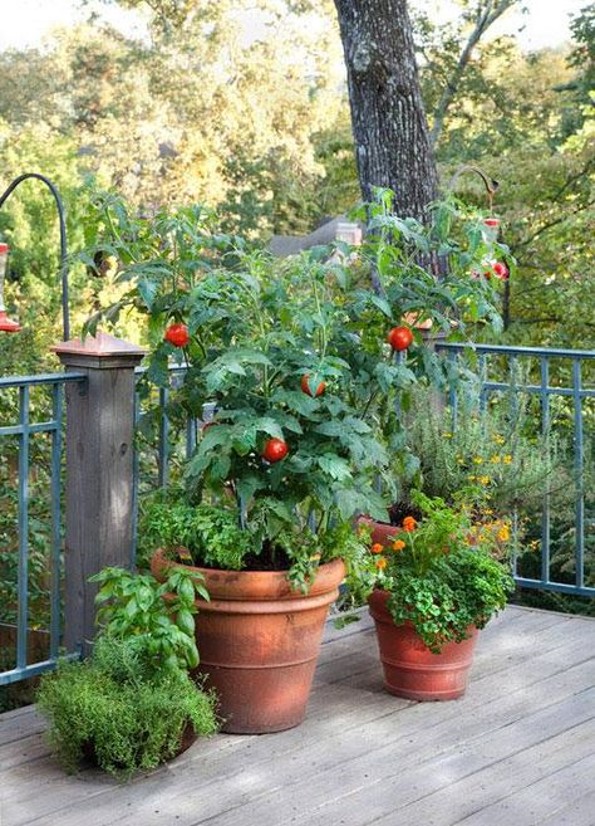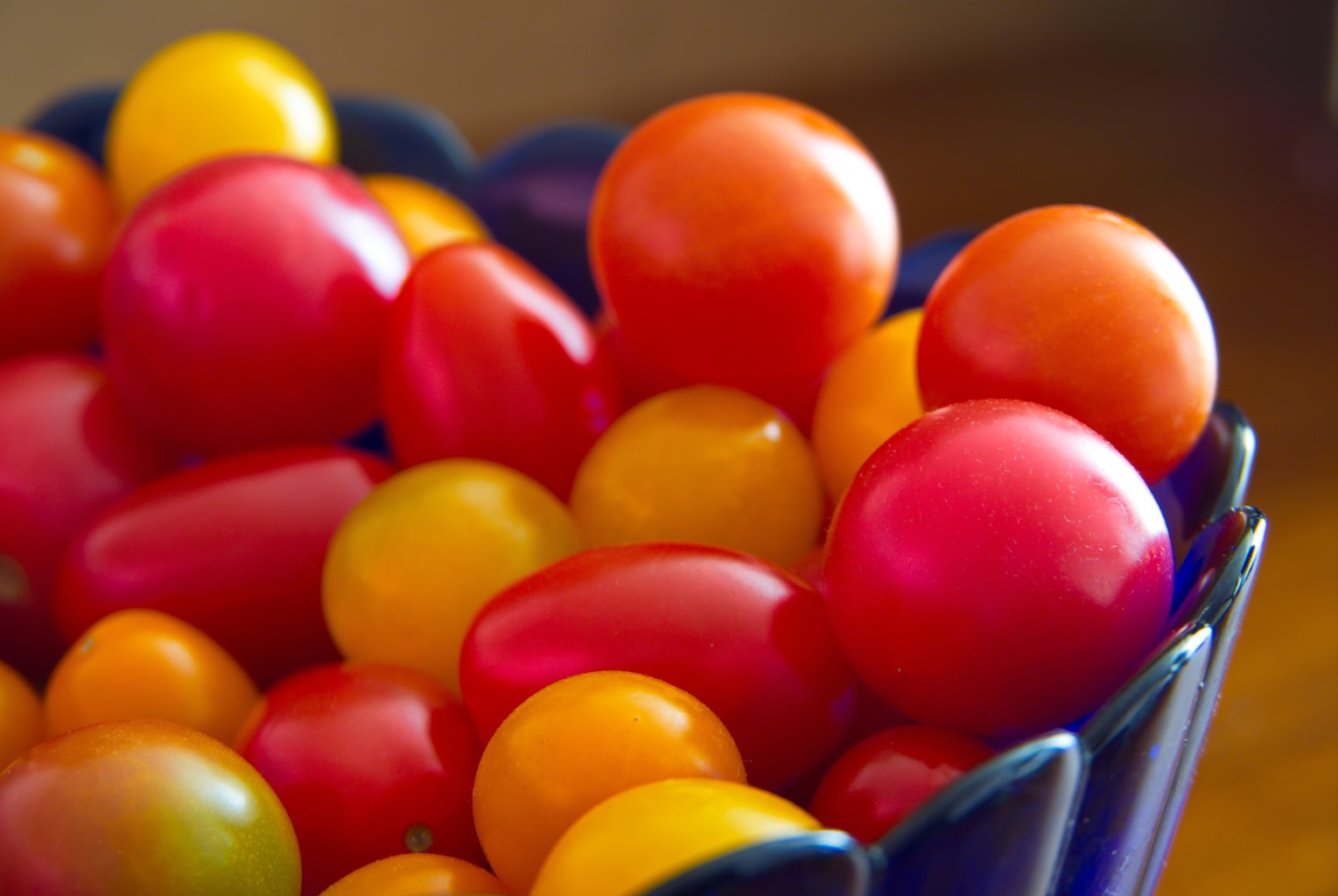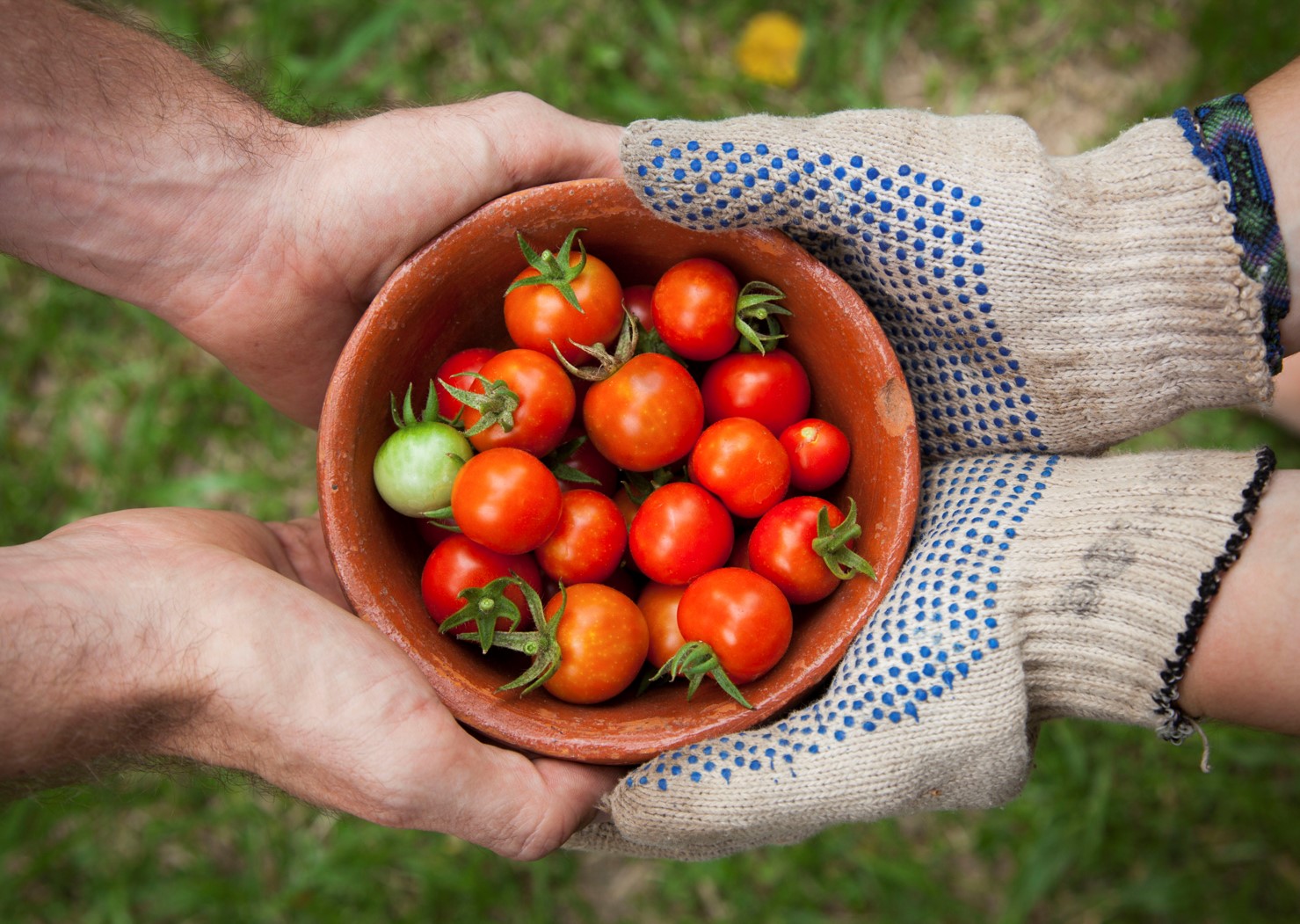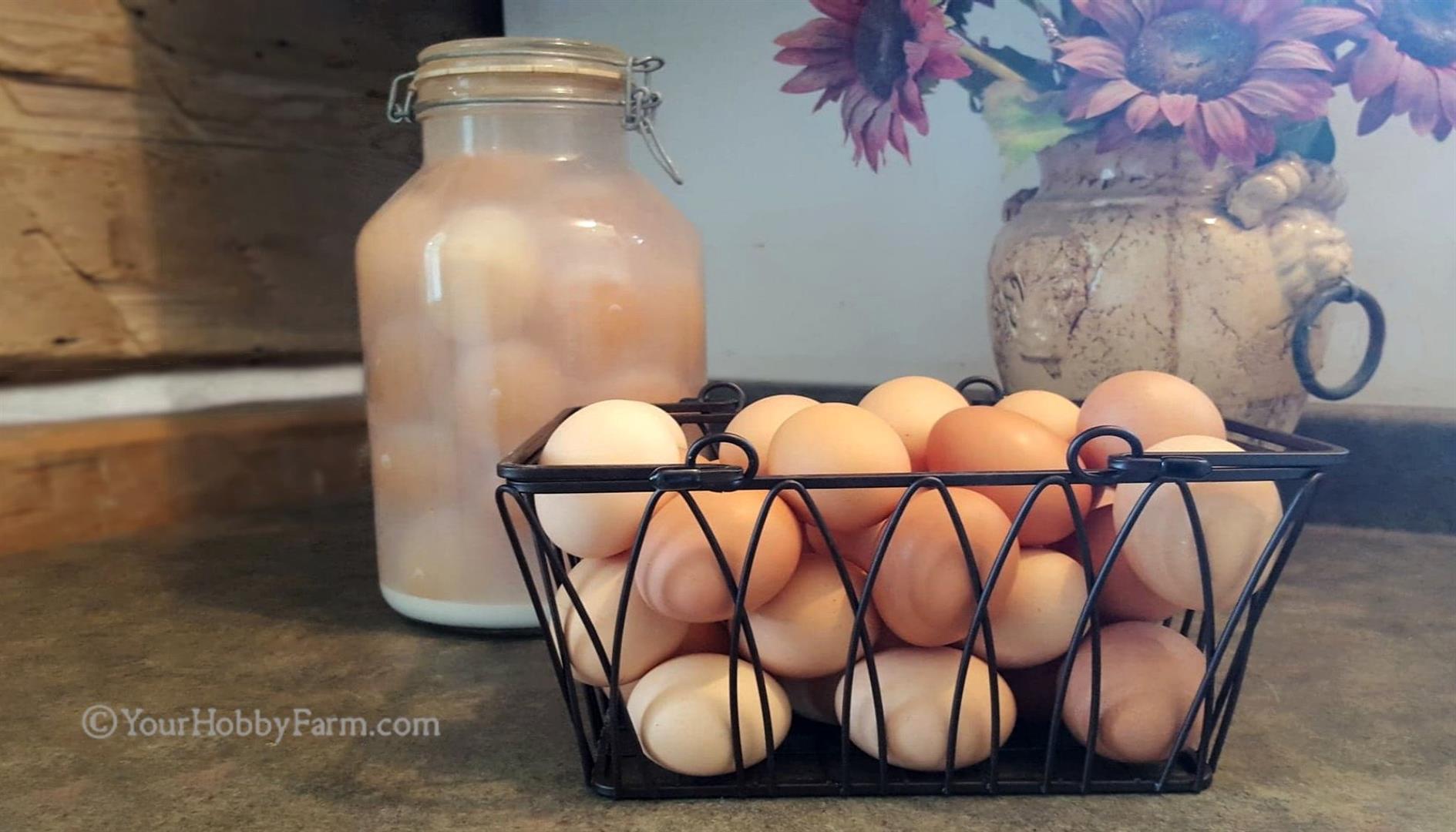Pictures of Tomatoes and a Whole Lot More!
Illustration, Information, and Inspiration
Hey friends and followers! We're changing our website address from YourHobbyFarm.com to HomesteadJoys.com.
With ongoing homestead responsibilities, this transition may take some time. Save our New Logo and QR code for easy navigation! We’d love you to join us in our journey!
 Homestead Joys Logo
Homestead Joys LogoHere's a collection of pictures of tomatoes and more for you to enjoy! Along with these lovely, mouthwatering photos of tomatoes, we share interesting facts about tomatoes and some inspiring ideas as well... Ready to experience a tomato adventure with us? As Muriel Barbery aptly put it, "The raw tomato, devoured in the garden when freshly picked, is a horn of abundance of simple sensations, a radiating rush in one's mouth that brings with it every pleasure... A tomato, an adventure."
As someone else once said, "If you've never bitten into a fragrant, vine-ripened, sun-warmed tomato harvested fresh from your own garden, you haven't tasted a real tomato. And once you do, you'll never again be satisfied with the mealy supermarket imposters. Fortunately, tomato plants are easy to grow and remarkably productive."
Pictures of Tomatoes Germinating, and Seedlings
From Germination to Blossom
We'll start where they start, as tomato seeds. We go into a lot more detail on our Growing Tomatoes page (coming soon), but here are the basics.
Since tomatoes are usually a long season plant, it's helpful to plant them indoors earlier in the spring, then transplant them into the garden when the weather warms up. Since tomatoes are warm season plants, they won't usually produce fruit until nighttime temperatures are above 55°F/12.7°C.
It's called vivipary when new life begins in the parent. In the case of tomatoes, vivipary occurs when seeds begin to germinate and grow while still inside the parent plant.
Tomato seeds typically germinate and begin to emerge from the soil in about a week, if given optimal conditions. Starting tomatoes indoors gives them a head start!
In these pictures of tomatoes, the seedlings illustrate the first stages of their growth. The first two leaves that you'll see on your little seedlings are called “cotyledon” leaves. The next leaves that develop are the first set of “true leaves.” Their true leaves will appear approximately 10-14 days after germination. They're already beginning to look, and even smell, like tomato plants!
As seen in these pictures of tomatoes, they can thrive either hanging upside down or right side up. What's more important to them than orientation, is being exposed to many warm hours of direct sunlight, rich, well draining soil, and regular watering.
People have expressed pros and cons to growing tomatoes hanging upside down, but give it a try for yourself! You won't be seeing rabbits eating your tomatoes, or other nasty pests like cutworms, and you'll eliminate ground fungus and perhaps other diseases as well. You can find plenty of ideas online for DIY hanging containers. They're also available to buy online or at your local nursery or pepiniere.
Pictures of Tomatoes in Bloom
And Interesting Facts About Tomato Blossoms
Before you know it, flowers will begin to bloom on your tomato plants. Here are some pictures of tomatoes in blossom.
Interestingly, a tomato plant doesn't produce individual male and female flowers, nor are there male and female tomato plants as there are with other species. Tomato plants are autogamous, which means that pollination of each flower is by its own pollen. This enables a single tomato plant to yield a harvest of fruit.
Even though the flowers are self-pollinating, being stirred by breezes and the movements of bees' wings and other insects on and around the blossoms help to move the pollen to where it is necessary for pollinization.
Pictures of Tomatoes That Are Not Yet Ripe
Soon the blossoms will fall and small green baby tomatoes will begin to develop. Now we patiently await for the tomatoes to ripen.
Contingent upon the the variety of tomatoes, they may take between 65 to 85 days from germination to bearing ripe fruit. As you can see in these pictures of tomatoes, after the blossoms fade and little green tomatoes emerge, they take close to another month to ripen and reach maturity. Depending on when you started them indoors, you can roughly estimate that your tomato plants will begin producing fruits 40 to 50 days after you've transplanted them into the garden.
Some people struggle with their green tomatoes not turning red. By summer's end, you may be saying, "Yikes! I still have so many green tomatoes on my vines!" But there are actually many delicious ways to serve green tomatoes! Check out our page, Delicious Tomato Recipes (page coming soon), which includes inspiring ways to enjoy both green and red tomatoes.
"Do green tomatoes turn red?", some have asked in despair at the end of summer as they see their green tomatoes not turning red. Well, there are several tricks to getting green tomatoes to ripen. Check out our page, Summer's Over... Still So Many Green Tomatoes! There you'll see more about ripening green tomatoes in a variety of ways.
Pictures of Tomatoes Ripening on the Vine
Beautiful Vine Ripened Tomatoes
There's nothing quite like fresh garden tomatoes that have ripened on the vine in the summer sunshine. Juicy, sweet, and brightly colored, they are appealing to our senses of taste, smell, and sight!
"A world without tomatoes is like a string quartet without violins." Well said, Laurie Colwin, well said!
Different Colors and Types of Tomatoes
By the way, what happens between tomatoes after not seeing each other for a long period of time? ...Ketchup!
Before We Continue, Here a Slice of Tomato History:
From 'Poison' to Obsession
The history of tomatoes can be traced back to the early Aztecs around 700 A.D. Tomatoes grew wild in some parts of South America, in the Andes, parts of Bolivia, Chile, Colombia, Ecuador and Peru.
Around the 1500s, European explorers returned home from the Americas and tomatoes were introduced to the continent of Europe.
Like potatoes, eggplant, and chili peppers, tomatoes are members of the nightshade family which include plants that are very toxic. However, in Southern Europe, people eagerly accepted and enjoyed the tomatoes.
In the late 1800s and early 1900s, Mr. M.M. Miesse produced a variety of large, delicious tomatoes. Here he's seen with his resulting work, published in Maule's Seed Catalog.
As their circulation spread north, more resistance was apparent. Due to their history being associated with more deadly members of the nightshade family, many were in northern areas were very cautious about eating these lovely things. The British, for example, admired the beauty of tomatoes, identifying them as 'wolf peaches' or 'love apples', but they believed them to be deadly poisonous until around 1820.
In 1820, Robert Gibbon Johnson, originally from Salem, New Jersey, publicly ate a basket of tomatoes in front of 2,000 people to demonstrate that the fruit is not poisonous. And in 1835 the French Academy introduced the word tomato in the dictionary!
Today tomatoes have evolved into one of the world’s most popular food crops. While tomatoes themselves are delicious, nutritious, and delightful to eat, there is still debate regarding the toxicity of the leaves and stems.
These are historic pictures of tomatoes from the Maule's Seed Catalogue, 1901. More of them can be seen on the Archive. Mr. Maule created various varieties of tomatoes, adding to their popularity.
Potted Tomato Plants are Practical and Nicely Decorative
"There is nothing better than picking up sun-warmed tomatoes and smelling them, feeling them and scrutinizing their shiny skins for imperfections, dreaming of ways to serve them." - Jose Andres
The Debate: Are Tomatoes Fruit or Vegetable?
That age-old question, are tomatoes fruit or vegetable, actually has an answer: they're both! To nutritionists, tomatoes are fruits that are considered vegetables. But botanically, a tomato fits the definition of a fruit as it's a seed-bearing structure that develops from the ovary of a flowering plant. Putting it simply in a way that, hopefully, will make everyone happy, a tomato is a culinary vegetable and a botanical fruit.
“Helicopters” from maple trees and floating dandelion puffs are fruits as well! But, for some reason, people get hung up on tomatoes... Nevertheless, the tomato is said to be the most popular vegetable in America and enjoyed by millions around the world.
Among the Smaller Varieties: Plum and Cherry Tomatoes
Plum tomatoes, sometimes referred to as Italian style tomatoes, are firm, meaty, and less juicy tomatoes. They're longer and egg shaped, but still with a delicious flavor. There are several varieties of plum tomatoes. They're great used for dehydrating, making rich homemade tomato sauces or tomato paste. They can be diced and canned or frozen, or enjoyed raw.
Little bite-sized tomatoes are a favorite summer treat! Cherry tomatoes resemble the size and shape of cherries. They are juicy, sweet, and thin-skinned. Their juiciness makes them notorious for squirting when you bite into them! Cherry tomatoes are great eaten plain, or hollowed out and stuffed with a lovely cream cheese filling, served on a fancy veggie tray. You can find them in red, yellow, and orange colors.
We certainly haven't covered all the different types here in these pictures of tomatoes. There are many others! Which types of tomatoes are your favorite?
Simple Tomato Pleasures: Harvesting, Eating, Sharing
Nothing says summer quite like an old-fashioned, vine-ripened tomato sandwich made with homemade mayonnaise and fresh-out-of-the-oven bread! You can add bacon and lettuce for a classic BLT if you'd like, but there's something satisfying about the hearty plainness of simplicity... Is your mouth watering yet?
"Country to me is living life at its simplest: Learning to appreciate a sliced vine-ripe tomato with a dash of salt, served between two slices of good bread and eaten over the kitchen sink." - Art Smith
"The tomato offers its gift of fiery color and cool completeness." - Pablo Neruda
After perusing through these beautiful pictures of tomatoes, if you don't have a garden in which to grow them, we wouldn't blame you for asking, "Where are fresh garden tomatoes near me?" If that's what you're wondering, check out farmers markets or roadside vegetable stands. You may even have a kind neighbor who will be willing to part with some of their garden bounty.
Or, how about growing tomatoes yourself!? Yep, you can grow tomatoes in a pot on your balcony or under a grow lamp indoors! Give it a try! Enjoy the fruit of your tomato adventures!
🎵 "Home grown tomatoes, home grown tomatoes
What would life be like without homegrown tomatoes
Only two things that money can't buy
That's true love and home grown tomatoes."🎵
John Denver
Translate This Page!
Traduire Cette Page!
¡Traduzca Esta Pagina!



Piping Rock©
Bringing you the highest quality In hundreds of health care and life-enhancing natural products at the
lowest cost to you!
high reviews, crazy deals,
happy, healthy customers!
Click here and save today!
Business Appreciation
* This website is not affiliated with
Piping Rock

Supporting our local feed mills
Meunerie Alexandria Milling
613-525-1973
Great Products • Great Prices
Great Service
Click the pic for their
facebook page!
Meunerie Alexandria Milling
Established in 1962 by The Massie Family
Email: Alexandriamilling@hotmail.Ca
475 Massie Crescent
Alexandria, Ontario, Canada
~~~
Small Business Appreciation
* This website is not affiliated with
Meunerie Alexandria Milling



